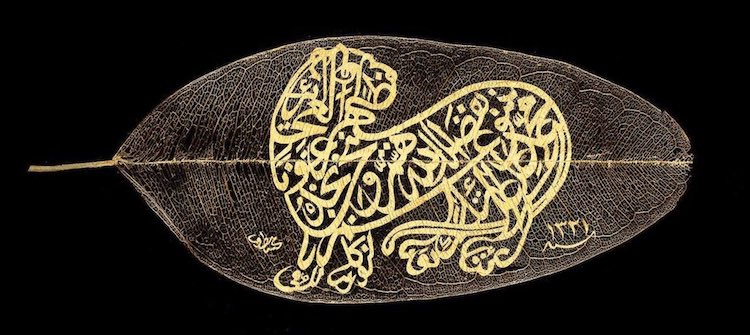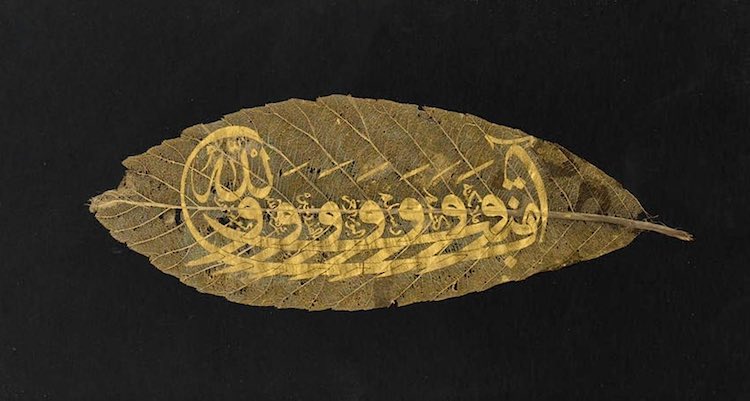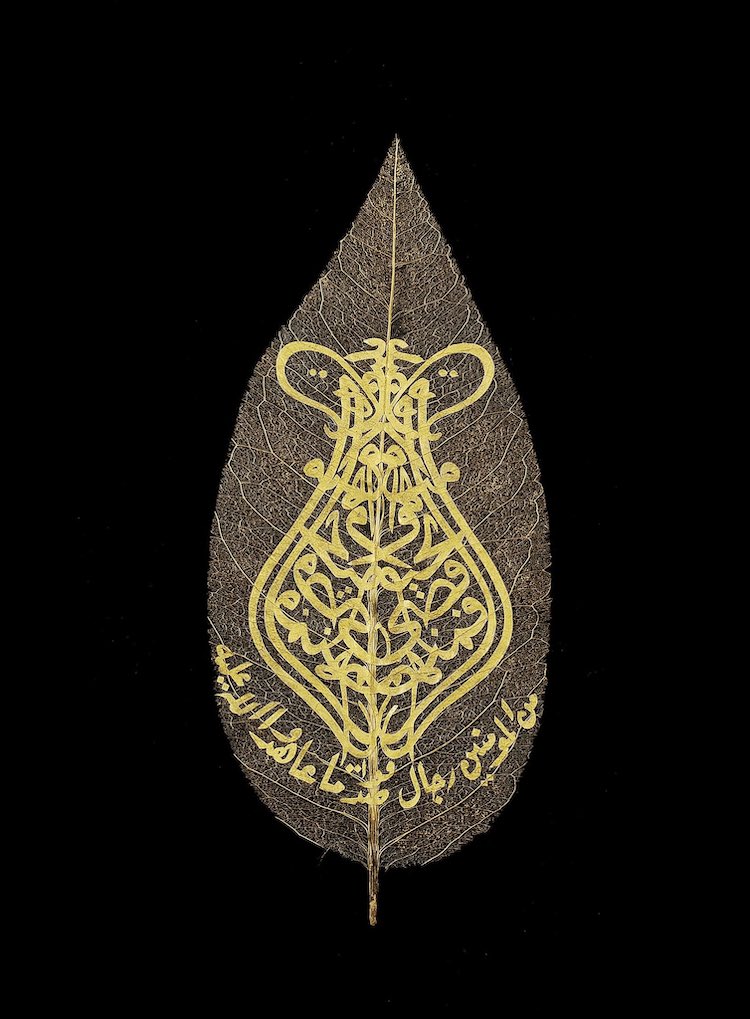
Arabic calligraphy is known for its beautiful, artistic lines; but, in Ottoman Turkey, calligraphers really took things to a whole new level. Over the course of 500 years, the Ottoman Turks perfected many different script styles and elevated the art form. Recently, Bayt Al Fann, an online art platform celebrating Islamic art, called attention to a unique canvas used for such calligraphy—a dried leaf.
This Twitter thread shares 20 examples of this difficult and delicate practice. The gold script pops against the dark, dried leaves. The spidery veins of the leaf enhance the work, creating a beautiful texture and pattern that contrasts with the swooping curves of the calligraphy.
Singapore’s Asian Civilisations Museum has several examples in its collection and shares that leaf calligraphy was widely practiced in Ottoman Turkey during the 19th century. Working with this natural material was no easy feat, though. “The leaf has to be dried, and the tissue has to be removed slowly so as to leave the skeletal membrane,” shares the museum. “The stencil of the composition is placed behind the leaf and the gold ink with gum Arabic is applied over it.”
As might be expected, verses from the Qur’an, poetry, and prayers were popular choices for calligraphers. But what might not be expected is the delightful practice of fitting the script inside shapes that form fruit, animals, and other inanimate objects. Looking at these pieces, it’s impossible not to marvel at their intricacy. One can imagine the painstaking work of the calligraphers, who would have needed to move with precision to create these lines on a fragile, uneven surface.
It’s a testament to their artistry that so many examples still survive. To imagine that for 100 years, or more, these calligraphy leaves were carefully preserved demonstrates the high value given to this precious form of art.
The Ottoman Turks are known for perfecting Arabic calligraphy.

In the 19th century, it was quite popular to use dried leaves as a canvas for this type of calligraphy.

Calligraphers often used animals, fruit, and inanimate objects in their compositions.



Qur’an verses, prayers, and poetry were popular themes for the calligraphers.



All images via Bayt Al Fann/Twitter.
Related Articles:
16th-Century Calligraphy Manual Available for Free Download
Artist Spends 3 Years Hand-Painting the Quran in Gold on 164 Feet of Black Silk
Shining a Light on the Beautiful Illuminated Manuscripts of the Medieval Period
10 Incredible Mosques of the World Celebrating the Grandeur of Islamic Architecture
